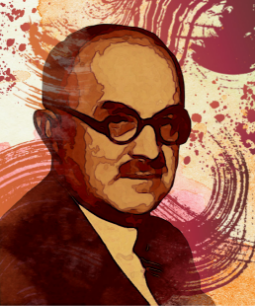Sharing Stories to Raise Awareness

In honor of Rare Disease Day, Sanofi is committed to raising the voices of people living with acquired thrombotic thrombocytopenic purpura (aTTP), also known as immune-mediated thrombotic thrombocytopenic purpura (iTTP).
Together we can learn from the real-life experiences of people who have struggled to find a diagnosis for their unexplained symptoms and who continue to find their way forward with the challenges of living with a rare disease.

Isabelle, aTTP patient from Belgium
Isabelle is sharing her story to help others who are facing the same challenges she faces.


Julia, aTTP patient from France
Julia discusses the importance of being heard when living with a rare disease.
“aTTP is very hard to detect, but a speedy diagnosis truly saves lives. I have relapsed twice, but we have to try not to think about it all the time. When you tell your family, ‘I don’t feel good, I’m scared,’ they want to fix something for you that isn’t fixable. I just needed to express myself, so I asked to see a psychotherapist. When I spoke to her it felt like I was giving my load to someone else. If I needed that, I think many people with an illness would benefit from talking to someone.”


Anise, aTTP patient from the United States
After a series of misdiagnoses and unanswered questions, Anise finally received a diagnosis.
“I was told I had a rare deadly blood disorder called aTTP. There was no cure. I started hash-tagging TTP and started sharing my story. Every Latina and African American woman I’ve spoken with during this journey, that story is the same. We were not listened to, even though we had labs that showed we had TTP, or the doctors don’t know what it is. Going forward, I want to bring awareness to aTTP. I want to be a voice for the ones who don’t want to talk about their story.”


Remembering a Pioneer in Rare Disease
Eli Moschcowitz (2 August 1879—23 February 1964)
The first case of thrombotic thrombocytopenic purpura (TTP) was described 100 years ago by Dr Eli Moschcowitz.
In 1881, when he was a boy, Dr Moschcowitz and his family emigrated to the United States from Hungary.
He graduated from Columbia University in 1900 and became an American citizen in 1902. He spent years as a resident at Mount Sinai Hospital and worked as a pathologist at the Beth Israel Hospital in New York. He returned to Mount Sinai Hospital in 1920, where he continued working until his retirement.
In 1924, Dr Moschcowitz described the case of a 16-year old girl with previous good health who died after a short hospital stay from an acute illness. In the postmortem examination, Dr Moschcowitz described widespread microvascular thrombi involving the heart, kidneys, and the spleen. HIs report was the first documented case of TTP.
Learn what happens in your body when you have TTP.
What happens after the hospital?
Reference: Cataland SR, Coppo P, Scully M, Lämmle B. Thrombotic thrombocytopenic purpura: 100 years of research on Moschcowitz syndrome. Blood. 2024;144(11):1143-1152.
